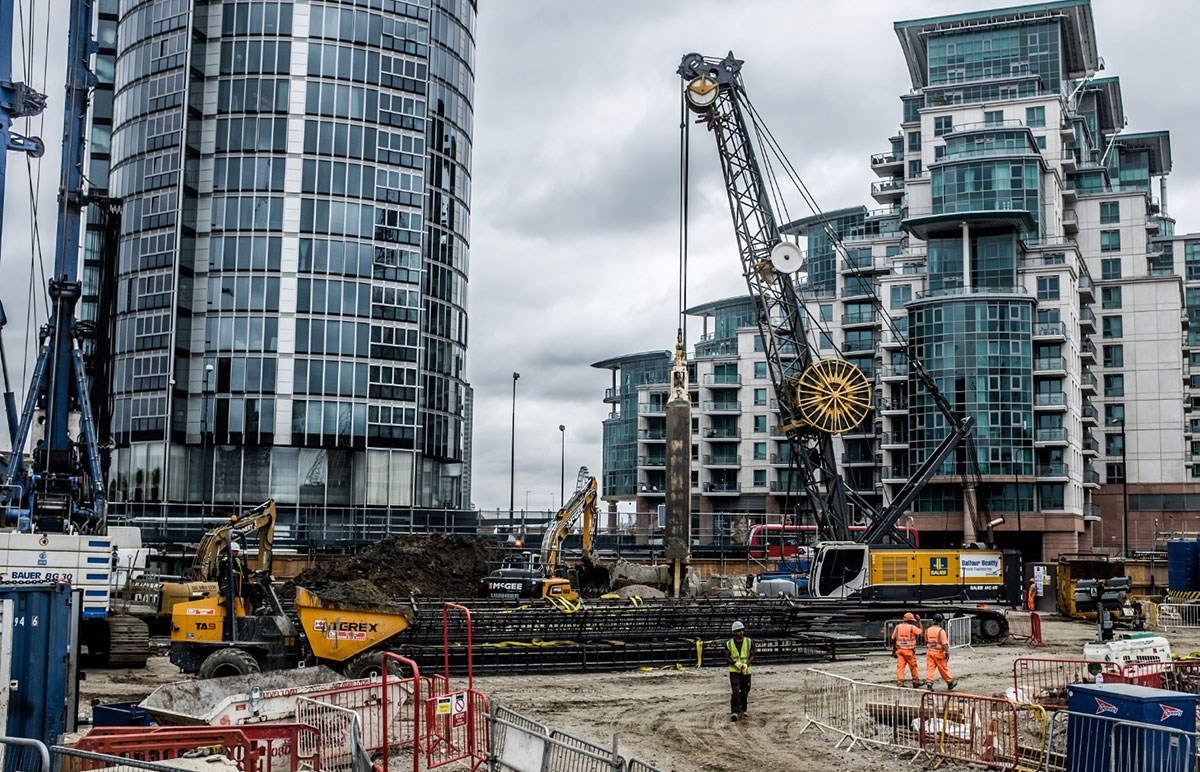The Only Guide to Geotheta
The Only Guide to Geotheta
Blog Article
More About Geotheta
Table of ContentsThe smart Trick of Geotheta That Nobody is Talking AboutThe 4-Minute Rule for GeothetaSome Known Facts About Geotheta.Some Known Factual Statements About Geotheta Geotheta Can Be Fun For Everyone

They perform website investigations, collect samples, do research laboratory examinations, and analyze data to evaluate the suitability of the ground for construction projects - Engineer of Record. Based on their searchings for, geotechnical engineers supply referrals for structure design, incline security, retaining frameworks, and reduction of geotechnical dangers. They team up with various other experts, such as designers, architectural engineers, and building teams, to ensure that geotechnical considerations are incorporated into the overall task layout and application
By examining the habits and residential or commercial properties of dirt and rock, they can recognize prospective geotechnical hazards such as landslides, dirt negotiation, or slope instability. Their experience assists avoid failures or crashes that can threaten lives and property. Below are some in-depth responsibilities and responsibilities of a geotechnical designer: Site Investigation: Geotechnical designers conduct site examinations to gather information on subsurface conditions.
They interpret the information to recognize the residential or commercial properties and behavior of the dirt and rock, including their toughness, permeability, compaction attributes, and groundwater conditions. Geotechnical Analysis and Design: Geotechnical designers assess the information accumulated during site investigations to analyze the security and suitability of the site for building projects. They execute geotechnical estimations and modeling to examine elements such as birthing capacity, negotiation, incline stability, side planet stress, and groundwater flow.
Indicators on Geotheta You Need To Know
Foundation Layout: Geotechnical engineers play a crucial duty in making foundations that can securely sustain the designated framework. They assess the soil problems and load demands to determine the proper foundation type, such as superficial structures (e.g., footings), deep structures (e.g (https://gravatar.com/exactlypainterdeb7b76e1a)., heaps), or specialized strategies like soil improvement. They consider aspects such as settlement restrictions, bearing capacity, and soil-structure communication to establish optimal structure designs
They assess building and construction strategies, screen website activities, and perform area assessments to verify that the layout referrals are followed. If unpredicted geotechnical problems arise, they examine the situation and give suggestions for removal or modifications to the layout. Risk Analysis and Reduction: Geotechnical engineers analyze geotechnical risks and risks connected with the task website, such as landslides, liquefaction, or dirt disintegration.

Collaboration and Communication: Geotechnical designers work very closely with other specialists associated with a project, such as architects, architectural designers, and building groups. Effective communication and cooperation are important to integrate geotechnical considerations right into the total job layout and construction procedure. Geotechnical designers offer technological competence, answer inquiries, and ensure that geotechnical demands are met.
Geotheta Can Be Fun For Anyone
Here are some kinds of geotechnical engineers: Foundation Engineer: Foundation engineers concentrate on designing and examining structures for frameworks. They analyze the soil conditions, tons requirements, and site characteristics to determine the most proper structure type and layout, such as superficial structures, deep structures, or specialized strategies like pile foundations.
They assess the variables affecting slope security, such as dirt buildings, groundwater conditions, and slope geometry, and establish techniques to avoid slope failures and minimize dangers. Earthquake Designer: Quake engineers specialize in evaluating and designing frameworks to withstand seismic forces. They examine the seismic threat of a site, evaluate soil liquefaction potential, and establish seismic style criteria to make sure the safety and security and strength of structures throughout earthquakes.
They perform area testing, collect examples, and assess the gathered data to identify the soil residential properties, geologic formations, and groundwater problems at a site. Geotechnical Instrumentation Designer: Geotechnical instrumentation designers concentrate on surveillance and measuring the actions of soil, rock, and structures. They look at this website set up and keep instrumentation systems that keep track of elements such as dirt settlement, groundwater degrees, slope activities, and structural variations to evaluate efficiency and offer early cautions of possible issues.
Examine This Report about Geotheta
They carry out examinations such as triaxial tests, consolidation examinations, straight shear examinations, and leaks in the structure tests to collect data for geotechnical evaluation and style. Geosynthetics Designer: Geosynthetics engineers concentrate on the style and application of geosynthetic products, such as geotextiles, geogrids, and geomembranes. They make use of these materials to enhance dirt security, enhance inclines, give drainage solutions, and control erosion.
They tend to be investigative individuals, which means they're intellectual, reflective, and investigative. They are interested, systematic, sensible, analytical, and rational. A few of them are likewise social, implying they're kind, generous, cooperative, person, caring, helpful, empathetic, skillful, and friendly. Does this seem like you? Take our totally free career examination to figure out if geotechnical designer is just one of your leading occupation suits.
In the workplace environment, geotechnical designers use specialized software devices to do estimations, produce layouts, and examine data. They prepare reports, testimonial task requirements, connect with customers and staff member, and coordinate job activities. The workplace setting gives a favorable environment for research study, analysis, and cooperation with other experts associated with the project.
Geotheta - Truths
They regularly visit job websites to perform site investigations, analyze geotechnical conditions, and collect information for evaluation. These sees involve traveling to different places, occasionally in remote or difficult terrains. Geotechnical engineers may carry out dirt sampling, conduct tests, and screen building and construction tasks to guarantee that the geotechnical elements of the task are being applied correctly.
Geotechnical designers additionally function in specialized geotechnical research laboratories. Geotechnical research laboratory designers function extensively in these environments, dealing with testing equipment, operating tools, and videotaping information.
Report this page